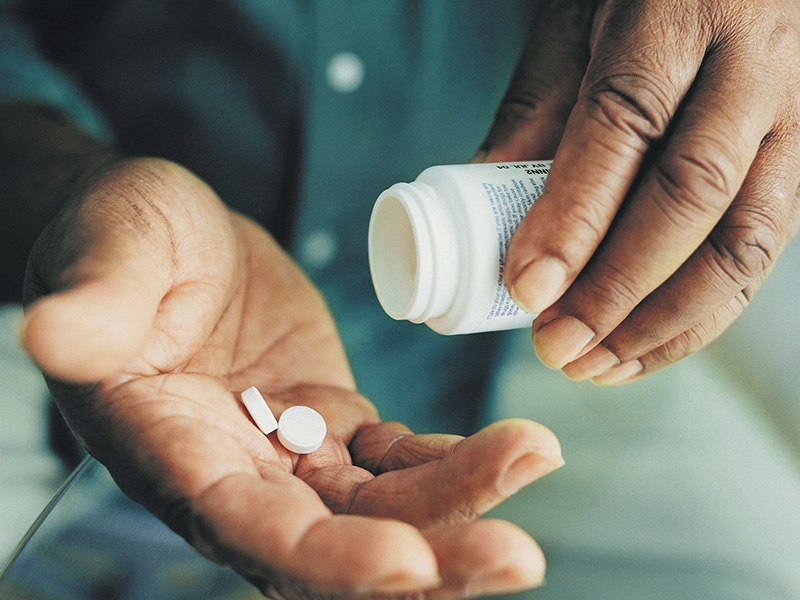experience, machinery, and excipients used, manufactured or compressed tablets may have problems that are visible immediately or only after storing.
The following are issues related to tablet manufacture and how to solve them.
Lamination and capping
The detachment or splitting of the top or bottom of a compacted tablet from the main structure of the tablet is known as capping. This can happen during tablet die ejection or during following procedures like coating, packing, or shipping.
In contrast, lamination is the transverse splitting and separating of a crushed tablet into two or more layers. It occurs when cracks emerge within the compact’s body, causing the tablet to break into sections.
Capping and lamination Factors
1.The presence of air pockets in the granules, i.e. insufficient removal of air from the granules in the die cavity before and during compression.
- The occurrence of excessive fines or tiny and microscopic fragments in the granules.
- Excessive elastic contraction of the tablet as a result of using too much pressure during the compaction stage.
- Improper particle bonding to create cohesive pills
- Die bore wear, notably from hard inorganic fillers.
- The use damaged punches and dies
- Consumption of well over granules or granules that have a very low amount of moisture (leading to loss of proper binding action).
- Granules that have not been entirely dried.
- Excessive lubrication is present.

How do you deal with capping and laminating issues during tablet production?
- Make use of tapered dies (dies which are tapered outwards toward the top of the die to allow the air to escape).
- Alter the granulation techniques.
- Remove part or all of the fines using a 100 to 200 mesh screen.
- Reduce the pace of compression.
- Before performing the main compaction, use pre-compression.
- Increase the binder concentration or switch to a different type of binder in the granule.
- Wear-resistant steel or hard die inserts should be used for the dies.
- Replace or correctly polish the punches and dies.
- Moisten the grains as needed.
- Hygroscopic substance, such as sorbitol, methyl cellulose, or PEG 4000, should be added.
- Dry the grains well.
- Change the lubricant amounts.
Sticking
Sticking occurs when a little portion of the compressed material sticks to the faces of the tooling surfaces. As compacts are formed continuously in this station of tooling, the problem worsens as more material is added to what is already attached to the punch face. The issue is most common on upper punches.
Sticking Reasons
- Inadequate or minimal lubrication.
- Tooling surface roughness
- Granulation is slightly moist.
How to Avoid Sticking During Tablet Manufacturing
- Properly combine the lubricant.
- Use coated tooling.
- Polish punch faces
- Reduce the moisture content of the granules.
- Improve hardness by making the tablet thin and increasing dwell time to make the moist granules stick to each other.
-
Picking
Picking occurs when a portion of the tablet adheres to the punch surface and is eroded away from the tablet surface. It is a more particular phrase for product adhering to the lettering, logos, or graphics on punch faces.
Picking Reasons
- Granules that have not been fully dried are compressed.
- During tablet compression, scratched punches are used.

How to Avoid Picking During Tablet Production
- Reduce the grains’ moisture levels.
- The punch face should be polished.
-
The appearance of mottling/mottled
This is common with colored grains. Mottling is described as an unbalanced color distribution on a tablet with light and dark patches.
Mottling Causes
- The color of the drug differs from the color of the other substances.
- During the granulation process, dye migrates to either small or large grains.
- When employing a colored adhesive gel solution, the color is unevenly distributed.
How to Avoid Mottling During Tablet Production
- Lower the drying temperature.
- Reduce the particle size by grinding.
- Modify the binder system.
- Replace the solvent system.
- Addition of a suitable coloring solution.
-
Chipping
Compacts with little chips absent from their edges are occasionally discovered after exiting the press or during subsequent handling and coating processes. This flaw is known as “chipping,” and it can be produced by compression conditions that result in overly soft (low mechanical strength) or too brittle pills, in addition to evident formulation flaws.
Chipping Reasons
- Granules that are too dry.
- The tablet’s finish is subpar.
- Punches and dies that have worn out.
- Wrong machine parameters, particularly a high ejection take-off plate.
- Extremely rough treatment of compacts after they have left the press.
- Machine sweep off blade on high setting.
How to Avoid Tablet Chipping During Production
- To plasticize the grains, moisten them.
- Punch polishing and substitute
- lowering the speed of the sweep off blade
- Changing the lowest
Why choosing senieer?
Senieer, a top supplier and manufacturer of pharmaceutical equipment worldwide, provides ONE STOP SOLUTION. For companies in the pharmaceutical, food, chemical, and cosmetics industries, Senieer is the best global partner. In China, Senieer has spent more than 34 years concentrating mostly on solid dosage forms. Integral process solutions that are trustworthy. We manufacture equipment in accordance with international standards including GMP, cGMP, and US FDA.
The one-stop solution services for complete projects, from advising to design, are improved by members of the Senieer technical team. We completely adhere to your approach and specifications for resolving all of your problems.
For more information,check our website:www.senieer.com










